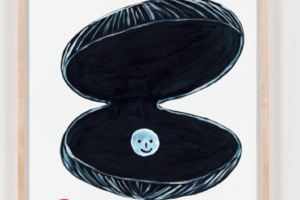Limerence, the intense and often irrational romantic attraction towards someone, is a complex and multifaceted condition that we can understand through the lens of hot and cold empathy gaps.
A hot-cold empathy gap is a cognitive bias where individuals tend to downplay the impact of their inner, instinctive urges on their own beliefs, likes, and actions. Its significance lies in the fact that human comprehension is profoundly influenced by one’s current emotional state. In other words, our experience of people and the world, and our conclusions, is highly state-dependent.
Hot Empathy Gap: When experiencing strong emotions, such as infatuation in the context of limerence, our cognitive processes become biased. This bias is characterized by a tendency to perceive the object of our affection in an idealized and highly unrealistic manner.
When it comes to limerence, the hot empathy gap plays a significant role. In the throes of this intense infatuation, our own emotions are on fire. We experience a heightened sense of attraction and an overwhelming desire to be near the object of our affection. During this phase, our judgment can be clouded, leading us to overlook potential flaws and idealize the person we’re infatuated with. It’s as if we’re under the spell of a feverish emotion that blurs our rational thinking and fuels our fantasies. We overlook their flaws, minimize potential red flags, and engage in behaviors driven by our emotional impulses rather than rational considerations. In essence, this cognitive bias leads us to make decisions that prioritize emotional satisfaction over logical analysis, which can cloud our judgment and potentially lead to poor choices like ruminating, stalking your limerent object (LO,) or otherwise dwelling in your emotions.
And, this bias is to blame for your limerent conviction that you’ll never get better. When you’re in the throes of limerence, it can make you believe that your LO is the ultimate love of your life, the most extraordinary experience you’ll ever encounter, and, crucially, that you’ll never be content without them. However, it’s essential to recognize that this perception is distorted and not an accurate reflection of reality!
Cold Empathy Gap: In contrast, the “cold” state represents a more rational and emotionally neutral mindset. This is when we can think more objectively, free from the overwhelming influence of emotions. In the context of limerence, the cold empathy gap allows you to see the object of your affection more realistically. You start to notice their imperfections, incompatibilities, or aspects of their personality that you might have overlooked when you were in the hot state of intense infatuation.
The interplay between these hot and cold empathy gaps can result in a rollercoaster of emotions. When we’re in the hot phase of limerence, we may make irrational decisions or pursue someone who might not be the best match for us. It’s only when we transition to the cold phase that we can gain a more realistic perspective on the situation.
Starting to recover proactively automatically shifts you to this state, where you’re more objective and seeing reality as it is.
Understanding limerence through these empathy gaps is essential for personal growth and relationship management. It highlights the importance of taking a step back to assess our feelings objectively, both in the throes of passion and during moments of clarity. This awareness can help us navigate the turbulent waters of limerence with greater wisdom and emotional intelligence.


Recent Comments